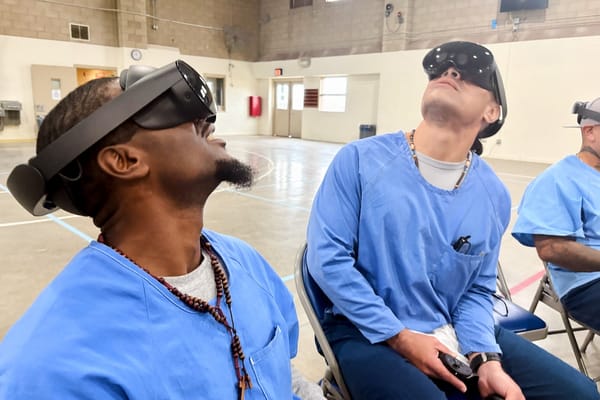Debra Berlyn: What’s New in 2022 for Aging and Tech?
Older adults continue at a rapid pace to adopt tech that assists the aging process.
Debra Berlyn

It’s the start of a new year and time to view what’s on the horizon for the latest technology innovations. To our great anticipation, the most significant technology event of the year, the Consumer Electronics Show, returned in-person to Las Vegas!
CES 2022 literally rolled in with some eye-catching innovations and gadgets unveiled at CES, notably with a BMW that can change its color and patterns with the use of a phone app. CES also unveiled the usual army of robots to clean the house, provide learning skills, and entertain. The Ameca robot is “human-like” and can be programmed with software using artificial intelligence, offering both speech and facial/object recognition. Ameca will engage in conversation and complement you on your lovely red hat.
The more important technology story for consumers for 2022, isn’t just the “wow” innovations that may or may not make it to market this year, it is the tech that will enhance and improve all of our lives. This is particularly important for the aging community, who increasingly rely on tech to stay connected to family and community, and as an important component of healthcare.
Those 65 and older continue to adopt tech at a rapid pace, narrowing the gap with their age 18-29 younger counterparts. Now, over 65% of older adults have broadband at home, 44% have tablets, and 61% have a smartphone. These “basics” form the foundation for layering the more sophisticated health and wellness and smart home innovations available today, and on the horizon.
The pandemic has emphasized the importance of tech for the aging community. A recent AARP study has confirmed that technology is a “habit” that is here to stay for older adults. The past couple of years has led to an emphasis on tech devices to monitor our health, help us stay fit and get connected to our health care professionals. We are spending more time at home for work and leisure, and while at home we want to be able to manage our energy use, home security, appliances and more.
According to the chief technology officer at Amazon, Werner Vogels, one of his primary predictions for tech this year is, “In 2022, our homes and buildings will become better assistants and more attentive companions to truly help with our most human needs. The greatest impact in the next few years will be with the elderly.”
Technology can provide solutions to make life easier for older individuals
A critical opportunity that technology provides is to solve tough problems such as how to make life just a bit easier for older individuals and address their greatest challenges as they age. Voice assistive tech continues to be a popular device for older adults. One-third (35%) of those 50-plus now own a home assistant, up from 17% just two years ago, with the voice assistant serving as a significant tool to reduce isolation for older adults.
While the AARP study found that growth of ownership of voice assistants, such as the Amazon Echo and Google Home, may have slowed for younger demographic groups, ownership continues to be on the rise for older adults.
Here are several examples of innovations for the aging community:
- The Labrador Retriever is an assistive “robot” that empowers individuals to live more independently by providing practical, physical assistance with everyday activities. The robot is a rolling container with trays that can be “commanded” to go to different locations in the home to retrieve objects and carry them to various locations. It maps the home and “learns” how to navigate the space to operate wirelessly.
- Tech devices that enable older individuals to track several critical aging factors continue to be introduced and desired in the marketplace. The “Buddy” from LiveFreely, is smartwatch software that monitors and manages fall prediction and detection, medication schedules and reminders, and emergency notifications. With alerts to family members, caregivers and emergency services providers, it provides wearers with an enhanced sense of security and independence. The software operates on both the Apple and Fitbit device.
- For any aging adult with mobility issues, or their caregivers, you know that just getting around can be a challenge and now there are advances to the most needed tool in aging: the walker. One company, Camino, has developed a sleeker, advanced walker with an ergonomic design, lights and improved navigation for bumps in the road to provide greater walking assurance and balance.
- The “Freestyle,” from Samsung, is an entertainment component of the smart home for older adults. It is a projector device with accessibility features that can be used inside the home or out, to project content such as a movie, photos or messages from any smartphone onto any surface.
AARP’s 2022 study on technology trends also recognizes that the increasing older demographic has significant purchasing power in the consumer market, including for technology spending. The study found, “Tech spending in 2020 among adults 50+ is up 194% (from $394 to $1144) to modernize, update, or create a better experience online.”
It also projected that by the year 2030, “the 50-plus market is projected to swell to 132 million people who are expected to spend on average $108 billion annually on tech products.”
In the coming years, older adults will have a wide range of new and innovative products to exercise their market power and find the right technology to enhance and assist their lives as they age. Over the past decade, technology has empowered older adults to be increasingly more independent, battle isolation, and stay informed and connected. While we can’t predict the future, the next decade should be an exciting opportunity for new innovations for the aging community.
Debra Berlyn serves as the executive director of The Project to Get Older Adults onLine (GOAL), and she is also the president of Consumer Policy Solutions. She represented AARP on telecom issues and the digital television transition and has worked closely with national aging organizations on several internet issues, including online safety and privacy concerns. She serves as vice chair of the Federal Communications Commission’s Consumer Advisory Committee and is on the board of the National Consumers League and is a board member and senior fellow with the Future of Privacy Forum. This Expert Opinion is exclusive to Broadband Breakfast.
Broadband Breakfast accepts commentary from informed observers of the broadband scene. Please send pieces to commentary@breakfast.media. The views reflected in Expert Opinion pieces do not necessarily reflect the views of Broadband Breakfast and Breakfast Media LLC.











Member discussion